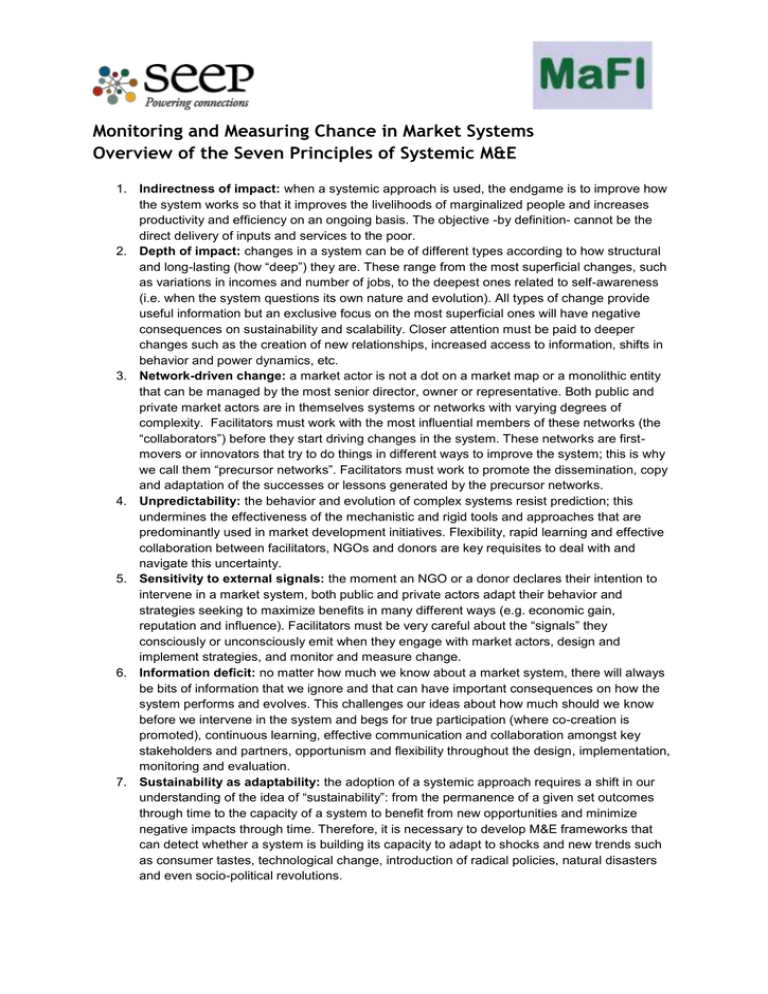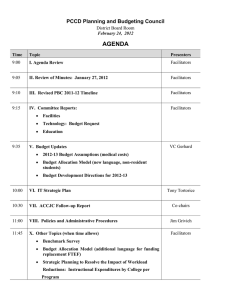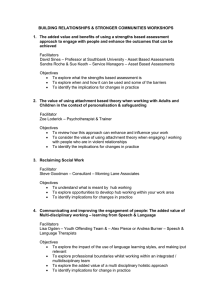Monitoring and Measuring Chance in Market Systems
advertisement

Monitoring and Measuring Chance in Market Systems Overview of the Seven Principles of Systemic M&E 1. Indirectness of impact: when a systemic approach is used, the endgame is to improve how the system works so that it improves the livelihoods of marginalized people and increases productivity and efficiency on an ongoing basis. The objective -by definition- cannot be the direct delivery of inputs and services to the poor. 2. Depth of impact: changes in a system can be of different types according to how structural and long-lasting (how “deep”) they are. These range from the most superficial changes, such as variations in incomes and number of jobs, to the deepest ones related to self-awareness (i.e. when the system questions its own nature and evolution). All types of change provide useful information but an exclusive focus on the most superficial ones will have negative consequences on sustainability and scalability. Closer attention must be paid to deeper changes such as the creation of new relationships, increased access to information, shifts in behavior and power dynamics, etc. 3. Network-driven change: a market actor is not a dot on a market map or a monolithic entity that can be managed by the most senior director, owner or representative. Both public and private market actors are in themselves systems or networks with varying degrees of complexity. Facilitators must work with the most influential members of these networks (the “collaborators”) before they start driving changes in the system. These networks are firstmovers or innovators that try to do things in different ways to improve the system; this is why we call them “precursor networks”. Facilitators must work to promote the dissemination, copy and adaptation of the successes or lessons generated by the precursor networks. 4. Unpredictability: the behavior and evolution of complex systems resist prediction; this undermines the effectiveness of the mechanistic and rigid tools and approaches that are predominantly used in market development initiatives. Flexibility, rapid learning and effective collaboration between facilitators, NGOs and donors are key requisites to deal with and navigate this uncertainty. 5. Sensitivity to external signals: the moment an NGO or a donor declares their intention to intervene in a market system, both public and private actors adapt their behavior and strategies seeking to maximize benefits in many different ways (e.g. economic gain, reputation and influence). Facilitators must be very careful about the “signals” they consciously or unconsciously emit when they engage with market actors, design and implement strategies, and monitor and measure change. 6. Information deficit: no matter how much we know about a market system, there will always be bits of information that we ignore and that can have important consequences on how the system performs and evolves. This challenges our ideas about how much should we know before we intervene in the system and begs for true participation (where co-creation is promoted), continuous learning, effective communication and collaboration amongst key stakeholders and partners, opportunism and flexibility throughout the design, implementation, monitoring and evaluation. 7. Sustainability as adaptability: the adoption of a systemic approach requires a shift in our understanding of the idea of “sustainability”: from the permanence of a given set outcomes through time to the capacity of a system to benefit from new opportunities and minimize negative impacts through time. Therefore, it is necessary to develop M&E frameworks that can detect whether a system is building its capacity to adapt to shocks and new trends such as consumer tastes, technological change, introduction of radical policies, natural disasters and even socio-political revolutions.


